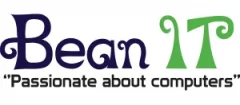Memory sticks are extremely useful, you can take them wherever you go and use them on whichever PC or laptop you happen to be using. It’s win -win all the way, until you lose it or it breaks!
If you have valuable information on your memory stick and you’ve lost it, chances are you’ll never get it back. However, there are steps you can take to keep your memory stick safe.
Why encrypt my memory stick
If you’re carrying confidential data, then an encrypted memory stick is essential. If you take a look at the Information Commissioner’s website and type “memory stick” into the search engine, you’ll find plenty of information on what happens when memory sticks are lost or stolen containing highly confidential information. The penalties are high if you are seen to be careless with other people’s personal details, so it pays to be cautious with the products you use to store your data.
What is encryption?
Encryption allows extra security so that whatever information you’re carrying on your memory stick is secure from predators. It manages to scramble files so they cannot be opened by anyone else.
You can purchase a memory stick that has already been encrypted, but this will cost more. You can however, encrypt a memory stick yourself.
DIY encryption
Encrypting a memory stick yourself is possible. A secure storage area must be created and this is known as a “volume,” this will hold the files you want encrypted. The volume must be ‘mounted’ so that you can find it. You will create a password at this point. Once the files have been encrypted you can more or less do what you want with them, you can move them, copy them or delete them. A volume is also “cross-platform,” which means you can open your volume on a Mac or a Windows computer.
You will need an encryption utility to encrypt the data on your memory stick. There are quite a few to choose, and TrueCrypt is one of the most popular. It’s free and easy to download.
Passwords
When you’ve created your password you need to remember it, because if you forget it, you won’t be able to access or recover your data. Don’t write the password on a post-it note and stick that to the front of your memory stick as one person did! As with all passwords you must keep them to yourself.
Backups
As well as encrypting your memory stick, it’s also important to back up your stick regularly. If you use TrueCrypt then you may find that all you really need to do is copy the encrypted volume file over to your hard disk, as TrueCrypt holds all your data in one file making it easier to keep safe. What’s even better is that the backup will also be encrypted too.
Make it a habit to back up your memory stick whenever it’s plugged into your PC. This will ensure you always have a copy of your files on your PC as well as your memory stick.
Back up and encryption are crucial for important information stored on a memory stick, and even more important if you use it to store personal data. Don’t be caught out with unsecured memory sticks. Take the precautions and protect your data – or you could find yourself paying a heavy price.
This all sounds a bit complicated
Bean I.T. can guide you through encrypting your memory stick and supply and setup anti-virus software on your Computer. Contact us for peace of mind.
If you have physically broken your memory stick, Bean I.T. has been known on occasion to be able to recover data from broken sticks, depending on how badly broken they are.

